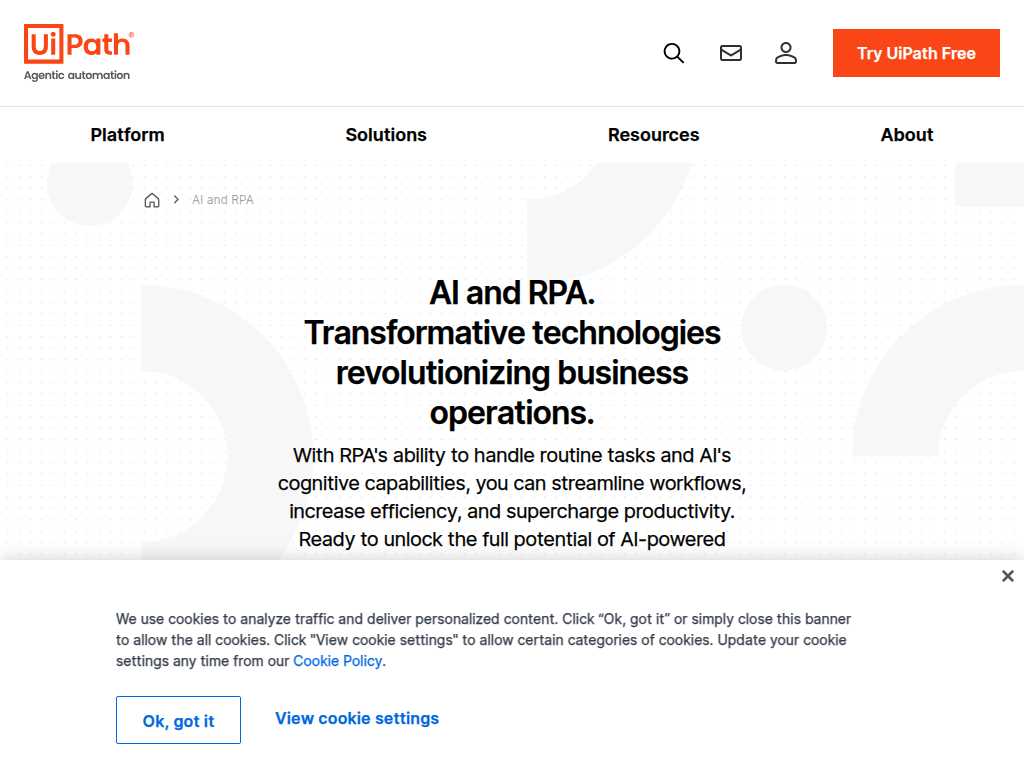AI and RPA | UiPath
AI Assistant

Streamline Your Automation Journey with UiPath Business Automation Platform
Average rated: 0.00/5 with 0 ratings
Favorited 15 times
Rate this tool
About AI and RPA | UiPath
The Ai and RPA | UiPath suite is designed to revolutionize business automation, providing a seamless integration of AI and robotic process automation to enhance operational efficiency. Users can expect to greatly improve productivity as the platform combines AI's cognitive capabilities with RPA's ability to manage repetitive tasks, resulting in streamlined workflows and significant time savings. With features like UI and API automation, intelligent document processing, and process orchestration, businesses can automate complex processes and achieve greater accuracy and speed. One of the standout benefits of Ai and RPA | UiPath is its adaptability across various industries such as banking, healthcare, and manufacturing, providing specialized solutions that address unique industry challenges. The platform’s AI-driven insights enable organizations to identify high ROI opportunities for automation and process optimization, ensuring continuous improvements and operational excellence. The low-code development environment makes it accessible for both technical and non-technical users to create and deploy automations rapidly, fostering innovation across the enterprise. From real-time analytics to unified management and governance, Ai and RPA | UiPath offers a comprehensive and scalable foundation to support mission-critical automation programs. The platform is also equipped with cloud-first flexibility, ensuring that businesses can scale their operations efficiently. Whether you're looking to enhance your document processing capabilities, implement advanced AI solutions, or simply improve overall workflow efficiency, Ai and RPA | UiPath delivers a robust and adaptable solution to meet your business needs.
Key Features
- Process mining
- Task mining
- Generative AI
- Intelligent document processing
- Real-time analytics
- Cloud-first flexibility
- Low-code development
- Unified management and governance
- Continuous testing
- Integration with major technologies like AWS, Microsoft, and Google Cloud